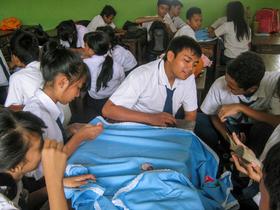Ron Jackson State Juvenile Correctional County High School serves 371 students in grades 7-12.
Minority enrollment was 72% of the student body (majority Hispanic and Black), which was lower than the Texas state average of 75% (majority Hispanic).
School Overview
Grades Offered
Grades 7-12
Total Students
371 students
Total Classroom Teachers
n/a
School Rankings
Student-Teacher Ratio
n/a
14:1
American Indian
n/a
n/a
Asian
1%
6%
Hispanic
36%
53%
Black
35%
13%
White
28%
25%
Hawaiian
n/a
n/a
Two or more races
n/a
3%
All Ethnic Groups
Eligible for Free Lunch
99%
57%
School Statewide Testing
School District Name
Ron Jackson State Juvenile Corr Complex Unit I School District
Source: National Center for Education Statistics (NCES), TX Dept. of Education
Frequently Asked Questions
How many students attend Ron Jackson State Juvenile Correctional County High School?
371 students attend Ron Jackson State Juvenile Correctional County High School.
What is the racial composition of the student body?
36% of Ron Jackson State Juvenile Correctional County High School students are Hispanic, 35% of students are Black, 28% of students are White, and 1% of students are Asian.
What grades does Ron Jackson State Juvenile Correctional County High School offer ?
Ron Jackson State Juvenile Correctional County High School offers enrollment in grades 7-12
What school district is Ron Jackson State Juvenile Correctional County High School part of?
Ron Jackson State Juvenile Correctional County High School is part of Ron Jackson State Juvenile Corr Complex Unit I School District.
Recent Articles

Charter Schools vs Public Schools 2025: Key Differences & Trends
Explore updated 2025 insights comparing charter schools vs public schools, enrollment, academic outcomes, funding, and real-world examples for families and educators.

Are Public Schools Ready for the 21st Century? 2025 Update
Explore 2025 insights on whether public schools are ready for the 21st century, covering performance, technology, equity, funding, and future-ready learning.

Public School Open House & Enrollment Season Guide
A parent-focused guide to the public school open house and enrollment season, with expert questions, timelines, and decision tips.





